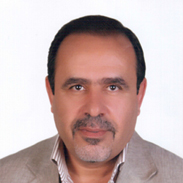Articles > > Shifting Ground: Reflections from the Fourth Arab-Iranian Dialogue Conference
Articles - Others - Date: 2025-05-14
The fourth round of the Arab-Iranian Dialogue Conference, held in Doha a few days ago, offered a valuable opportunity to examine firsthand the evolving positions of regional actors in the wake of major developments that have shaken both the region and the world since the eruption of Al Aqsa Flood, and especially following Donald Trump’s rise to power in the United States. For those of us who participated in earlier rounds of this dialogue, myself included, it was also a chance to compare where these actors once stood and where they stand today.
Unlike the third round of dialogue, held in Tehran about a year ago, the most recent dialogue excluded any discussion of the nuclear issue. In Tehran, shortly before the helicopter crash that claimed the lives of former Iranian President Ebrahim Raisi and his Foreign Minister Hossein Amir-Abdollahian, the discussion among Iranian participants––including Amir-Abdollahian, current Foreign Minister Abbas Araghchi, and seasoned diplomat Kamal Kharrazi (often dubbed Tehran’s “shadow man” for his behind-the-scenes influenc e)––focused heavily on a “revision of Iran’s nuclear doctrine.” This doctrine, adhered to for over two decades, explicitly prohibits the development of nuclear weapons and the militarization of Iran’s civilian nuclear program.
At the time, Arab participants––myself included––came away with a clear impression: the very fact that Iranian officials raised such a sensitive topic signaled that the doctrine was shifting. The rationale, as articulated by Iranian speakers, was that the doctrine had failed to make meaningful progress toward any of its three key strategic goals; it had not lifted the sanctions and embargo imposed on Iran; it had not liberated the Middle East from weapons of mass destruction, as Israel remains the region’s sole nuclear power; and it had not secured international recognition of Iran’s right to maintain a peaceful nuclear energy program for civilian purposes.
At the time, I wrote for Al-Mayadeen that Iran was on the verge of joining the “nuclear club,” and that the public announcement of a bomb was merely a matter of time. In my view, the most strategic moment would have been at the tail end of President Biden’s term, or during a transition between U.S. administrations. But that moment never came. Iran remains without the “nuclear deterrent card,” which, in my opinion, is the only viable way to establish a balance of terror with Israel. I even went so far as to call on key Arab and regional powers—specifically Egypt, Saudi Arabia, and Turkey—to break Israel’s nuclear monopoly and pursue their own nuclear capabilities.
That, too, never materialized. This inaction only emboldened Netanyahu and some U.S. officials to call for the Libyan model of nuclear disarmament —centered on dismantlement and external relocation of nuclear facilities—rather than the North Korean model, in which Pyongyang retains its nuclear arsenal and delivery systems.
In the fourth round of dialogue, the nuclear issue was removed from the agenda altogether. Araghchi, now Foreign Minister, gave only a brief summary of the Muscat talks, during which he reiterated Iran’s red lines, the most important of which being: no dismantlement, and a firm commitment to continuing uranium enrichment at a level Iran deems acceptable, though still within limits tolerated by the West and Israel, in exchange for sanctions relief and reintegration into the global economic and financial systems.
In my view—and this is a point I would have raised had there been a space for open review and critique—Tehran missed a rare opportunity, both for itself and for the region, to end Israel’s nuclear monopoly. Even though this path would entail costs, its benefits would far outweigh the burdens.
In my view—and this is a point I would have raised had the space for open critique existed—Tehran missed a rare opportunity, both for itself and for the region, to challenge and potentially end Israel’s nuclear monopoly. Though such a move would come at a cost, the long-term strategic gains would, I believe, far outweigh the risks.
The Fate of the Axis: Triumphs and Challenges
The dialogue sessions did not offer enough space for much-needed reflection on how various actors have performed since October 7th. Of course, this is not the first round of dialogue held amid post-Al Aqsa Flood dynamics—the third conference also took place under similar conditions. Most discussions amounted to side comments during sessions on Palestine, Syria, and Yemen. However, the side conversations at the forum—equally valuable as the general sessions—offered meaningful insight into the state of the Axis of Resistance: where its actors have succeeded, where they faltered, and what lies ahead.
Yemen
Yemen received widespread praise both during and outside the sessions, particularly after the Houthis delivered on their promises to the Palestinian cause. They also negotiated an agreement with the Trump administration widely viewed as a win for the weaker party, demonstrating they weren’t so weak after all. Rather than raising a white flag or bowing to U.S. demands, they succeeded in decoupling American interests from Israeli ones—an important precedent that Hamas would follow as they negotiated the Edan Alexander deal with Washington behind Tel Aviv’s back, in direct opposition to Netanyahu’s wishes.
Hamas
There was broad consensus that Hamas continues to demonstrate strong management of both the battlefield and negotiations. Reports of arduous operations in northern Gaza and Rafah coincided with news of the Edan Alexander deal, brokered directly with the U.S., bypassing Netanyahu. The combined implications of both developments suggest that the war is far from over. Netanyahu and the fascist right’s attacks on Gaza’s civilians and infrastructure reflect desperation and a loss of patience. The door remains open for a resolution—one far removed from Netanyahu’s unrealistic claims of “total victory,” which are unconvincing not only to most Israelis but also to the Trump administration, which is losing patience with his lies and false promises.
Hezbollah
Side discussions with Hezbollah representatives and supporters revealed the contours of the group’s current challenges. On one hand, Israel’s ongoing war of attrition is reshaping the rules of engagement and undermining confidence in the deterrent capabilities of armament. On the other hand, the broader Lebanese public—including Hezbollah’s own base—is not ready to return to all-out war, fearing a disproportionate Israeli response.
This creates a serious dilemma: maintaining the status quo is unsustainable, yet challenging it could be even worse. Hezbollah must seek alternative solutions, potentially unconventional ones. Regional developments—especially the Tehran-Washington negotiations—could either ease or complicate Hezbollah’s position. A successful agreement in Muscat could alleviate regional pressures on Hezbollah’s weapons, allowing the issue to be addressed more easily within a Lebanese framework. Conversely, failure to reach an agreement could worsen Hezbollah’s situation, making it more difficult to maintain its arms amid a changing regional landscape.
Signals of the Gulf-Iranian Thaw
The Iranian-Gulf détente sparked by the “Beijing agreement” left a notably positive mark on this fourth conference. Discussions focused on exploring avenues for cooperation, particularly in trade, investment, maritime navigation, the environment, and cultural exchange. There was less anxiety and clearer willingness to close a troubled chapter marked by mutual suspicions.
This atmosphere encouraged some participants to float premature ideas—such as framing Israel as a “common enemy” to both Arabs and Iranians. While this sentiment may resonate with popular opinion, it does not reflect official positions, where the issue of Israel remains a point of division between several Arab governments from the Iranian regime.
The same applies to Palestinian question, which continues to unite public sentiment but divides official stances. Some Arab governments not only support the Palestinian Authority but also openly express hostility toward Hamas, viewing it as a threat—sometimes an even greater threat than Israel, where the former is a declared enemy, and the latter a potential ally or, in some cases, an actual one.
Nonetheless, these divisions should not prevent both sides from identifying areas of cooperation—even if not in political strategy, then at least in narrative-building and humanitarian efforts.
Ultimately, the fourth conference was an important iteration of Arab-Iranian dialogue. Iran came with a unified message and coherent delegation, while the Arab side represented at least 22 distinct voices, if not more. The Iranians clearly took note and emphasized the importance of bilateral diplomacy—acknowledging how unlikely it is for the Arab world to speak or act as a single bloc. “You think they are together, but their hearts are diverse.” Qur’an, Surah Al-Hashr (59:14).




